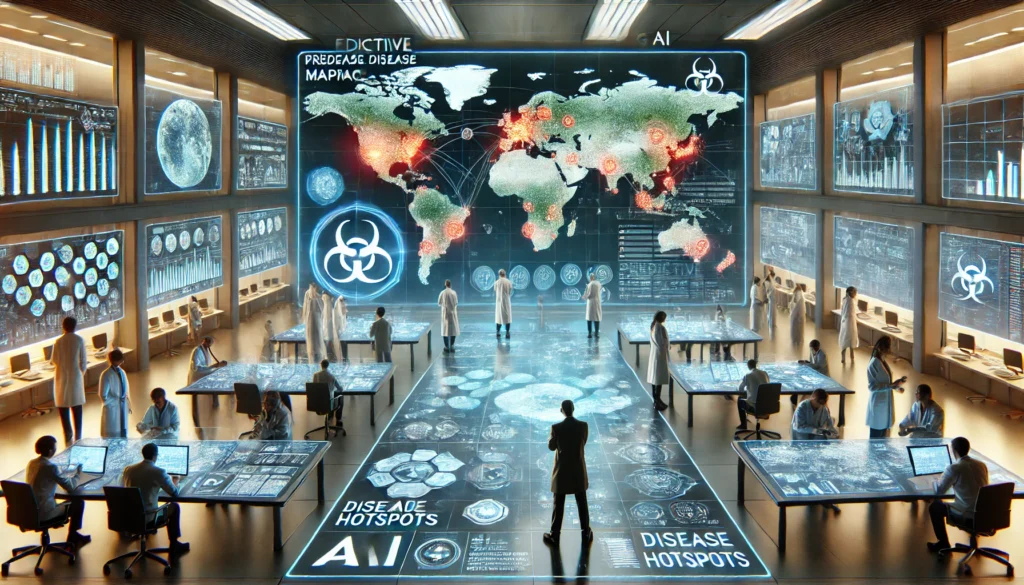Predictive Disease Mapping is an innovative application of Artificial Intelligence (AI) aimed at identifying, tracking, and predicting the spread of diseases. By analyzing vast amounts of data from various sources, these systems offer insights into disease patterns, enabling timely interventions and improving public health outcomes.
How Predictive Disease Mapping Works
- Data Collection and Integration
- AI systems gather data from multiple sources, including:
- Electronic Health Records (EHRs).
- Social media activity and search trends.
- Geographic Information Systems (GIS).
- Environmental data such as temperature, humidity, and pollution levels.
- AI systems gather data from multiple sources, including:
- Pattern Recognition
- Using machine learning algorithms, the system identifies patterns in the data that indicate disease emergence or spread.
- Example: Detecting clusters of symptoms in a specific area that may indicate a new outbreak.
- Predictive Modeling
- The AI system uses predictive analytics to estimate how a disease might spread over time, taking into account:
- Population density.
- Travel patterns.
- Historical disease trends.
- The AI system uses predictive analytics to estimate how a disease might spread over time, taking into account:
- Visualization and Reporting
- Results are displayed through interactive dashboards and maps, making it easy for public health officials to understand and act on the data.
Applications of Predictive Disease Mapping
- Pandemic Preparedness
- AI systems can predict the likelihood of disease outbreaks and suggest containment strategies.
- Example: During the COVID-19 pandemic, predictive models helped anticipate hotspots and resource needs.
- Resource Allocation
- Governments and healthcare organizations can use predictive mapping to allocate vaccines, hospital beds, and medical staff more effectively.
- Disease Surveillance
- Continuous monitoring of disease patterns enables early detection of emerging health threats.
- Example: Identifying seasonal flu trends to prepare vaccination campaigns.
- Urban Health Planning
- Helps city planners design healthier living environments by analyzing how urban factors like pollution or overcrowding contribute to diseases.
Benefits of Predictive Disease Mapping
- Early Intervention
- By predicting outbreaks, authorities can take preventive measures to control the spread of diseases.
- Data-Driven Decision Making
- Provides actionable insights for public health policies and emergency response strategies.
- Global Health Impact
- Supports international collaboration by providing data to track diseases across borders.
- Cost Efficiency
- Reduces the economic burden of managing large-scale health crises by enabling targeted interventions.
Challenges and Ethical Considerations
- Data Privacy and Security
- Sensitive health data must be handled responsibly to protect individual privacy.
- Bias in Data
- AI models may produce biased results if the data used is not representative of all populations.
- Dependence on Technology
- Over-reliance on AI tools may reduce human involvement in critical decision-making.
- Resource Inequality
- Developing countries may lack the infrastructure to fully benefit from predictive disease mapping technologies.
The Future of Predictive Disease Mapping
With continued advancements in AI, predictive disease mapping is poised to become a cornerstone of modern public health. By integrating real-time data and improving model accuracy, these systems will empower communities and governments to combat health crises more effectively. As AI evolves, its role in predictive medicine will expand, potentially transforming the way we prevent and manage diseases worldwide.


